This site provides access to a collection of images illustrating a wide range of ecosystems in different climatic zones, from the tropics to the Arctic, from the lowland to high mountain regions. The images are organized according to the concept of zonobiomes, largely following the book Walter's Vegetation of the Earth by S.W. Breckle. In general, mountain ecosystems up to the (potential) treeline are assigned to the respective climatic zone of the adjacent lowland, the ecosystems higher up are considered separately. Both (near-)natural and man-made ecosystems are included, except for urban systems completely detached from the eco-climatic conditions. Since it is often hard to determine whether an ecosystem is natural or not, and since many areas of the world do not host natural ecosystems in the strict sense any more, all ecosystems thought to come close to those prevailing before the arrival of human are considered natural.
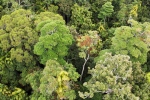
A considerable share of the inner tropics, receiving convective rainfall all year round, is still covered by tropical rainforests, even though their extent is shrinking by conversion to farmland or silvicultures. Tropical forests extend to the very coastline (mangroves) and far up into the mountains (montane rainforests and cloud forests). Mangroves and mountain forests also exist in areas otherwise dominated by savanna, grassland or even desert.
Access images of coastal forests and mangroves
![]() tropical rainforests
tropical rainforests
![]() montane rainforests and cloud forests
montane rainforests and cloud forests
![]() man-made ecosystems
man-made ecosystems
![]() plants
plants
![]() animals
animals
![]()
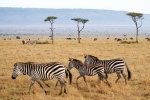
The outer tropics, midway between the equator and the tropic circles, receive convective rainfall only during part of the year and do not support dense rainforests. Tropical savannas and grasslands dominate these areas and extend to rain-shaded zones of the very inner tropics. Mountain slopes are often much more humid and carry dense forests. Particularly in Eastern and Southern Africa, savannas and grasslands are extraordinarily rich in wildlife. Most of the area, however, has been converted to farmland or pastures.
Access images of savanna and grassland ecosystems
![]() man-made ecosystems
man-made ecosystems
![]() plants
plants
![]() animals
animals
![]()
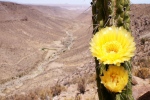
In the high-pressure areas around the tropic circles, but also in the rain shadow of tropical islands and mountain systems, precipitation is too scarce to support a close cover of vegetation. Whilst some extreme deserts are almost void of vegetation, plants and animals have developed specific adaptations to survive with a minimum supply of water and to inhabitate the less extreme parts of the hot deserts. As desert soils are often very fertile, human has been converting desert to farmland for thousands of years, employing various irrigation techniques.
Access images of desert ecosystems
![]() man-made ecosystems
man-made ecosystems
![]() plants
plants
![]() animals
animals
![]()
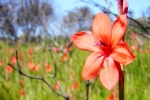
The low mid latitudes at the Western edges of the continents are influenced by high-pressure cells during summer and by the westerlies in winter, bringing most of the rainfall. Hard-leaved forests and shrublands appear to be best adapted to these conditions. During and after the dry summers, wildfires are common and often required to maintain the equilibrium of the natural ecosystems. Most of the natural ecosystems has been converted to cultural land, in Southern Europe and North Africa already for thousands of years.
Access images of mediterranean forests and shrublands
![]() mediterranean montane forests
mediterranean montane forests
![]() man-made ecosystems
man-made ecosystems
![]() plants
plants
![]() animals
animals
![]()

Humid coastal mountain systems of the subtropics and mid latitudes are covered by evergreen broad-leaved, coniferous or mixed forests rich in ferns and mosses. Such areas are often inhospitable to human so that, compared to other zones, much of the natural ecosystems still exist. Temperate rainforests are often located adjacent to mediterranean areas in the direction of increasing humidity. Forests of mediterranean mountains and temperate rainforests both host a number of distinct coniferous tree species sometimes considered as relicts from the generally moister Tertiary.
Access images of temperate rainforest ecosystems
![]() man-made ecosystems
man-made ecosystems
![]() plants
plants
![]()
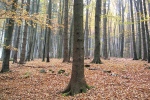
Much of the mid-latitudes, as long as not too far away from the Ocean, are potentially covered by winter-deciduous forests. Such ecosystems are characterized by a clear differentiation into four seasons, from the spring with herbs flowering under the still leafless trees, the summer as time of the main production of biomass, the colourful autumn and the peaceful winter. Most of the natural forests, however, have been converted to farmland, also most of the extended Atlantic heathlands are not considered natural. Mountain forests are most often dominated by conifers.
Access images of temperate deciduous forest ecosystems
![]() temperate montane forests
temperate montane forests
![]() man-made ecosystems
man-made ecosystems
![]() plants
plants
![]()
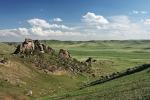
Part of the land surface of the mid-latitudes is located far away from the ocean (such as Central Asia) or in the rain shade of large mountain systems (such as Eastern Patagonia). These areas, depending on the particular climatic and edaphic conditions, support grassland, shrub semidesert or desert ecosystems limited mainly by moisture supply. The transition to the tropical and subtropical deserts is gradual, but temperate deserts generally lack succulent plants. The land is usually sparsely populated by human and sometimes used for grazing of cattle, sheep or camelids. More humid mountain slopes are often occupied by sparse forest.
Access images of steppe and cold desert ecosystems
![]() montane forests
montane forests
![]() man-made ecosystems
man-made ecosystems
![]() plants
plants
![]() animals
animals
![]()
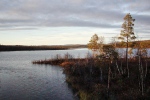
North of the mid latitudes, the growing season becomes too short for most deciduous broad-leaved tree species. Except for very humid areas, they are replaced by evergreen or deciduous conifers forming huge forest belts (boreal forest, to some extent resembling temperate montane forests) in North-Eastern Europe, Siberia and Canada. Human mainly extracts timber from the forests, but humid areas are lso used for agriculture. With the Arctic treeline ecotone they open up to the heath- and grassland of the tundra. Both tundra and boreal forests are rich in wetlands. No comparable forest belt and very little tundra exist in the Southern hemisphere.
Access images of boreal forest and wetland ecosystems
![]() tundra ecosystems
tundra ecosystems
![]() man-made ecosystems
man-made ecosystems
![]() plants
plants
![]() animals
animals
![]()
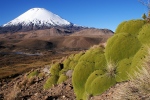
In the mountains of the various eco-climatic zones, above the (potential) treeline, ecosystems are often very different from those in the lowlands. In the humid mountains of the inner tropics, distinct giant rosette plants are intermixed with tussock grassland and heathland. Dwarf shrubs dominate the highlands of the arid outer tropics and subtropics. As one moves farther polewards, the highland ecosystems start to resemble the tundra, they start at lower elevation, and finally the mountain treeline merges with the Arctic treeline.
Access images of wet tropical mountain ecosystems (páramo)
![]() dry tropical and subtropical mountain ecosystems (puna)
dry tropical and subtropical mountain ecosystems (puna)
![]() mountain ecosystems of the temperate and cold zones
mountain ecosystems of the temperate and cold zones
![]() man-made high-mountain ecosystems
man-made high-mountain ecosystems
![]() plants
plants
![]() animals
animals
![]()
This site provides access to a collection of images illustrating selected distinct and remarkable groups of terrestrial plants. The section is organized according to systematic or morphologic groups, not following a stringent taxonomic approach.
Access all images of plants
![]()
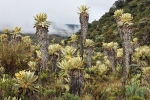
Giant rosette plants have developed in tropical and subtropical high-mountain areas. Representing different taxonomic groups usually forming small herbs, they have convergently evolved to particular growth forms. Some giant rosette plants develop stems several metres high with rosettes on the top. Others, with the rosettes on the ground, form phallus-shaped inflorescences reaching a height up to four metres. After flowering once, the plants die. Both types are are distinct features of the South American and East African mountains and of some islands like Maui (Hawaii) and Tenerife.
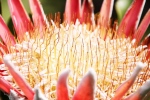
The Proteaceae family is represented by shrubs and small trees characterized by large and showy inflorescences or cones. The family is represented with many species in Australia and the Cape Region of South Africa, and with few more in the mountains of East Africa and in Patagonia. Almost all species of the Proteaceae rely on the occurrence of wildfires for reproduction and regeneration.

Conifers, members of the gymnosperms, have dominated the earth in the Mesozoic and up to the Tertiary. Today, they are outcompeted by the Angiosperms in many habitats, whilst still dominant in others (e.g. forests of temperate mountains and boreal forests). Some distinct conifer species, mainly growing in the mountain forests of mediterranean areas and in temperate rainforests, are considered as relicts from the generally moister Tertiary, having survived the ice ages in protected habitats.
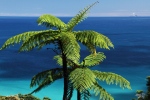
As ferns are an ancient group of plants, their water transport system is not very well developed. Therefore, they usually do not develop a tree-like habit. Some few genera, however, do: tree ferns, reaching heights of five metres and more, grow particularly in the understorey of subtropical and tropical forests with constant high humidity slowing down transpiration. An extraordinary exception is Hawaii, where tree ferns can be found as pioneers on lava flows.
This site provides access to a collection of images of selected groups of animals. The section is organized according to systematic groups.
Access all images of animals
![]()

Primates are the group of living beings that includes also the human. Our closest relative is the chimpanzee, there is genetic evidence that would support to assign human and chimp to the same genus (Homo). Gorilla and orang-utan are other species of large apes, whilst monkeys of several more species are roaming the forests, savannas and shrublands throughout the tropics and subtropics. All monkeys and apes have comparatively large brains, a good visual sense and the ability to climb on trees. Primates are considered as generalists regarding habitat and food.

Felids - or cats - are well-known as domestic animals, but much larger representatives of this group of predators live in the savannas of Eastern and Southern Africa and the American and Asian forests and mountains. Cheetahs are restricted to Africa whilst tigers, which are at the verge of extinction, only live in Asia. Jaguars and mountain lions live in America. Lions and leopards are encountered in Africa and Asia, but the Asian population of the lion is very small. Most felids are individualists, only the lion lives and hunts in groups.
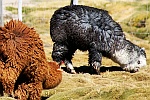
Camelids, which are herbivorous even-toed ungulates, are well-known from the deserts of Northern Africa and Asia. The Bactrian camel (two humps) and the dromedary (one hump) are popular domestic animals due to their ability to store water, an essential advantage in those arid regions. But camelids occur also in the South American Andes: the guanaco and the vicuña are wild, whilst alpaca and llama are domesticated, originating from the other two species.
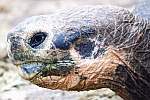
Reptiles are an ancient group of animals including turtles and tortoises, snakes, lizards, iguanas, crocodiles and their relatives. In general, they are considered as cold-blooded. Therefore, their distribution is concentrated to areas with warm climate, but smaller representatives also exist in temperate regions. The maybe most remarkable occurrence of reptiles is on the Galápagos Islands with several species of giant tortoises, each confined to a particular habitat, and two species of iguana.
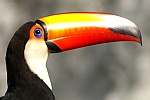
Besides bats, birds are the only vertebrates with the ability to fly over long distances, though there are also some large groups of birds (e.g. ostriches) having lost this characteristic feature. Birds occupy a variety of habitats from the tropical rainforest to the Arctic, some migrate seasonally over long distances. There is strong evidence that birds have evolved from dinosaurs, having been the only representatives of this ancient group of animals surviving the end of the Cretaceous.
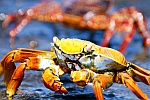
Most of the animal species known today are arthropods. This group of invertebrates includes insects, spiders, scorpions, crabs, shrimps, lobsters and some more. Whilst most species remain small and inconspicous, some of them grow to considerable size - the Japanese spider crab may reach a maximum leg span of almost 4 m. Arthropods occupy almost all imaginable terrestrial and aquatic habitats. Particularly the insects, representing more than half of the recent animal species, are extremly adaptable.